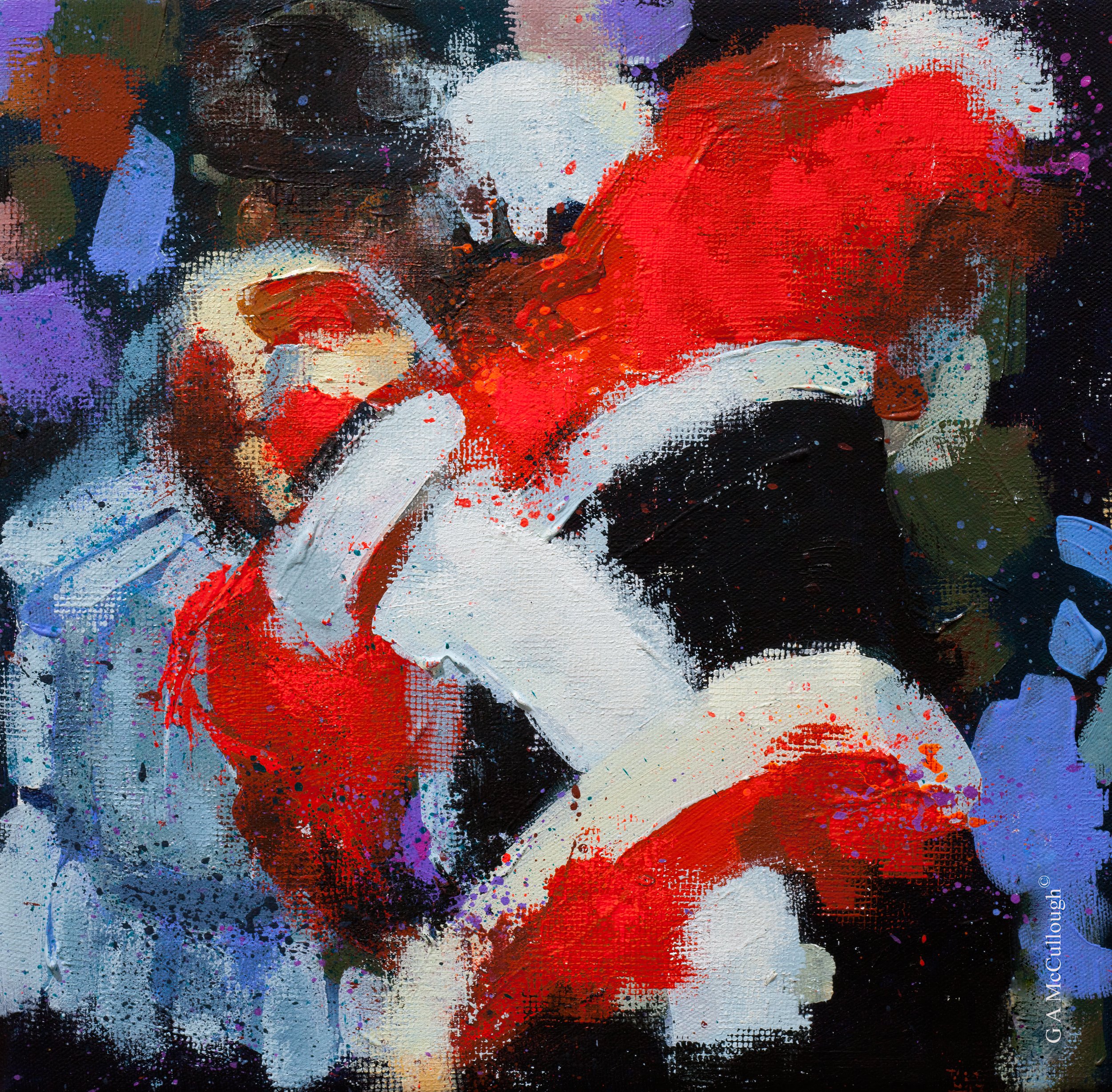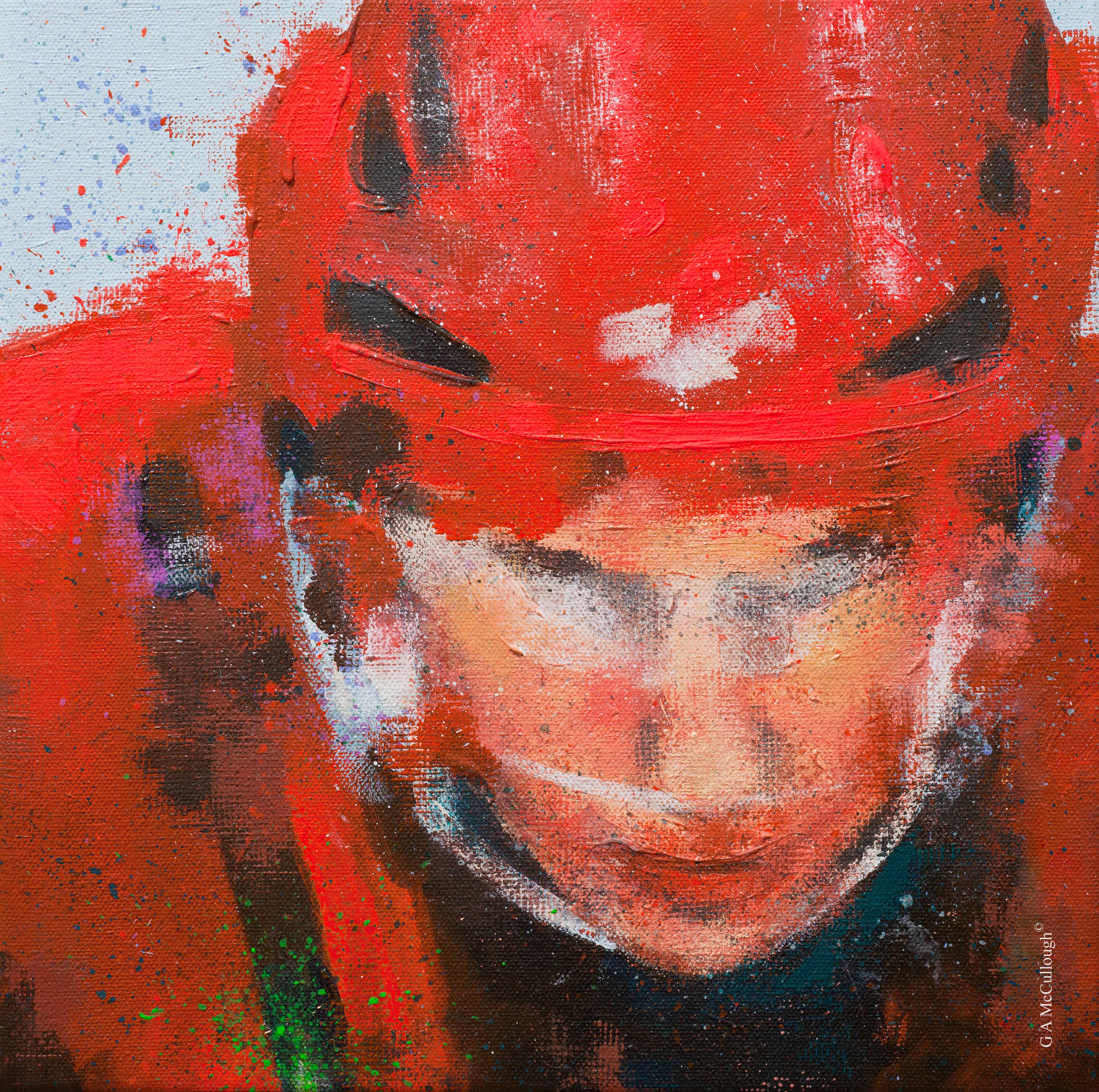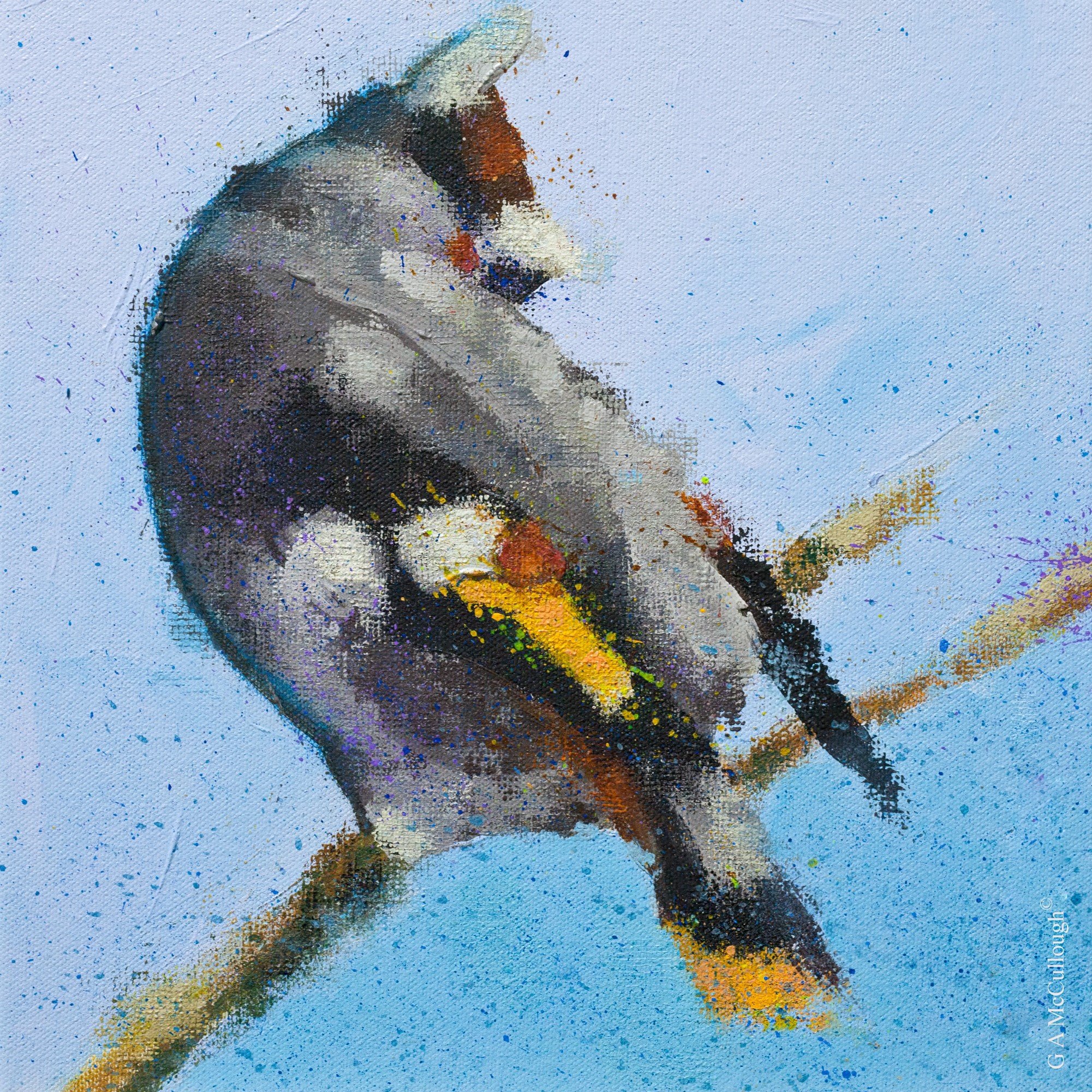
Gregory A. McCullough is a Great-Lakes–based Canadian artist whose hand-painted mixed-media works probe how technology shapes vision and knowledge. Classically trained in Industrial Design and Fine Arts—and fluent in digital animation from years creating 3D simulators—McCullough marries expressive brushwork with conceptual depth. His richly textured paintings invite collectors to question not just what they see, but how they see it.
GREGORY A. McCULLOUGH
Gregory A. McCullough
(b. Canada — lives and works in the Great Lakes watershed)
Gregory A. McCullough is a Canadian artist whose work explores how perception is shaped by technology, memory, and the evolving visual languages we use to make sense of the world. Grounded in the belief that “how we see is how we know,” McCullough’s paintings act as meditations on contemporary paradigms of understanding—revealing, translating, and sometimes challenging the stories we tell ourselves about reality.
Working primarily in hand-painted mixed media, his practice deliberately resists the sterility of digital precision. Each piece privileges the human touch—tactile, expressive, and intentionally imperfect—bringing nuance and authenticity to his exploration of perception in an increasingly digitized world. The result is a body of work rich in texture, depth, and conceptual resonance.
With classical training in Industrial Design and Fine Arts from Humber College and Concordia University, McCullough later studied Digital Animation at Icarus and spent over two decades designing 3D synthetic environments for pilot and air traffic controller training at Adacel and CAE. This professional background lends his work a unique duality—juxtaposing the intuitive gestures of hand-painting with a deep fluency in digital systems.
For collectors, McCullough’s work offers more than visual engagement—it invites reflection. His paintings celebrate the shifting terrain of knowledge and perception, inviting viewers to consider not just what they see, but how and why they see it that way. With themes spanning memory, technology, and the body’s relationship to space and vision, his work stands as both a personal inquiry and a cultural mirror.




